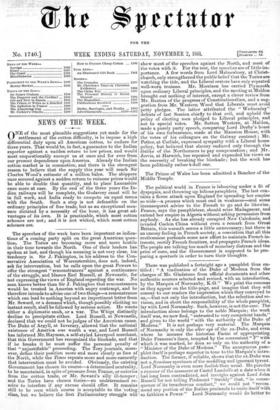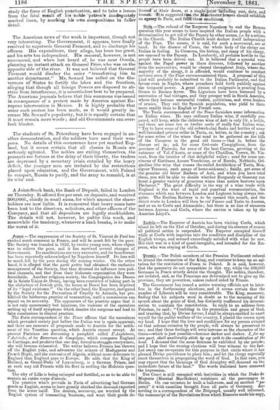There was published a fortni g ht a g o a pamphlet thus en-
titled : "A vindication of the Duke of Modena from the charges of Mr. Gladstone from official documents and other authentic sources selected and revised, with an introduction, by the Marquis of Normanby, S.G." We print the commas as they appear on the title-page, and imagine that they will convey to our readers the impression which they conveyed to us,—that not only the introduction, but the selection and re- vision, and in short the responsibility of the whole pamphlet, lay with Lord Normanby. Such, however, is not the case. The introduction alone belongs to the noble Marquis; the work itself was, we now find, " entrusted to very competent hands," and given to the world " with the authority of the Duke of Modena." It is not perhaps very material. The Marquis. of Normanby is only the alter est) of the ex-Duke, and even where he accuses the historian Farini of appropriating Duke Franceso's linen, tempted by the convenient " F" with which it was marked, be does so only on the authority of a. "Minister of the Duke of Modena." The anonymous pam- phlet itself is perhaps superior in tone to the Marquis's intro- duction. The former, if reliable, shows that the ex-Duke was not a ferocious specimen of the meddling and ignorant tyrant. Lord Normanby is even more foolish than usual. He parades a rumour of the massacre at Castel Landolfo at a date when it had long been contradicted, and inveighs against Lord John Russell for not telling Piedmont " frankly" that, " in conse- quence of its treacherous conduct," we could not " recom. mend any portion of the Italian peninsula to unite itself with so faithless a Power." Lord Normanby would do better to
study the force of English punctuation, and to take a lesson from the fatal sesta Aff his noble patron'. inatteguately marked linen, by marking his own compositions in fuller detail.































